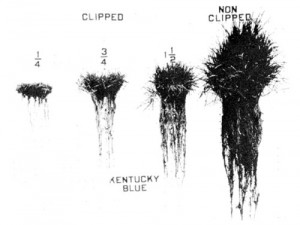Because our partnership with you is important, we’ve created this online reference library to help keep you informed about all things lawn care and animal/pest control related. This FAQ section contain answers to many of the common questions we hear.
Our News section is where you will find a blog of our latest information.
Our Turf Tips section has links to past newsletters (as PDFs).
The next two sections address in more detail, Lawn Diseases and Grassy Weeds.
And finally, a Resources section that will provide you the MSDS information on the products we use.
Questions About the Company
Why should I hire Tuff Turf to maintain my lawn instead of doing it myself?
We are professionals, we know how much, how often and how to! Your time is very valuable, why spend your weekend slaving in the yard when you could spend your free time enjoying your family. Why would you go through all that work when hiring a professional will deliver much better results.
We have had several disappointments with other lawn care companies in the past, why would Tuff Turf be any different?
Tuff Turf is a small, locally owned, family operated lawn care company that prides itself in being number one in customer satisfaction. We treat every lawn as if it were our own.
Are your products safe?
The products we use have gone under immense testing by the EPA. We use all products according to label directions.
Questions about Mole Control
How do I know if I have moles?
Moles are diggers. If you have piles of dirt or pushed up ridges, you have moles. Moles do not come out of the ground. If you have holes, it could be a chipmunk, ground squirrels, or vole.
Do moles hibernate?
No. They will usually go beneath the frost line. They have to continue to eat all winter or they will die.
If I get rid of the grubs do the moles go away?
No. Moles primarily eat worms. Controlling grubs is a good idea because grubs will kill your grass, but it will not deter any mole activity.
What is a vole?
A vole is a meadow mouse.
What is your guarantee for the mole control program?
We say that we provide mole “control,” not mole “elimination.” No human can guarantee that moles will not return. Moles are an animal in their natural habitat doing what God created them to do: dig and eat. We can guarantee that we are the most professional mole control company in West Michigan. We take mole control very seriously. We have 5 full-time technicians that do nothing but trap moles all day, every day, as long as the ground is not frozen or snow covered. If you have fresh mole activity between our visits, call or email us and we will promptly return to your property.
Questions about Lawn Care
Do you use dry or liquid fertilizers?
We use a granular fertilizer and liquid weed control.
Do I need to water the application in?
Our fertilizer is granular. It will sit on the lawn and do nothing until it gets watered in. It does not have to be watered in immediately, but the grass needs water several times a week anyways.
How long does it take for the weeds to die?
Our weed control will work immediately. You will see the weeds curling up within a day, but will not disappear for a couple of weeks.
How many applications should my lawn receive in a year?
Our recommendation is 6. This is an application every 5 – 6 weeks during the growing season which is April through November.
How long do I need to wait until I can go on my lawn after treatment?
It is recommended to keep children and pets off the lawn until dry. This usually takes an hour but is sooner on warm, sunny days.
What height should I be cutting my lawn?
During the spring and fall, the lawn can be cut at 2.5 inches to 3 inches. During the summer the lawn should be cut at 3.5 inches.
The following info-graph shows the impact on roots that mowing at different heights has:

How often should I cut my lawn?
Your lawn should be cut every 5 – 7 days. The rule of thumb is to never cut off more than 1/3 of the blade of grass. This means that if you cut your lawn at a height of 3 inches, it needs to be cut when the lawn is 4.5 inches high. (1/3 of 4.5 inches is 1.5 inches)
How much should I water my lawn?
This answer will vary depending on the season, soil type, sprinkler type, and water pressure. A general rule of thumb is an inch of water per week. This is best determined by placing a rain gauge in the lawn, or even butter dishes and measure the amount of water collected with a ruler. During periods of 80 degrees, I would recommend watering daily. I offer sprinkling tips if you sign up for my electronic Turf Tips.
How do I remove dead spots from my dog?
The burn spots that dogs create are because their urine is too acidic. There are products that can be given to your dog to reduce the acidity level in the urine. Consult your veterinarian before trying any products. The best solution is to have bark chips or a natural area just for the dog to use (this, of course, is a lot easier in theory than reality).
Why don’t you aerate in the spring?
Spring aeration can break the crabgrass control barrier and lead to crabgrass and other weeds. It is also usually too wet in the spring and our equipment will put ruts in your lawn. Another problem we run into is underground sprinkler systems that are still winterized and heads can not be marked.
How often should I aerate?
If your soil is clay, you have pets, excessive thatch, shade, children playing on the grass, or are susceptible to lawn diseases, at least once a year, if not twice. Otherwise, you could get by with aeration every other year.
Should I dethatch my lawn?
No. If your lawn has excessive thatch, aerate it a couple of times. Dethatching will rip up new seedlings. Some thatch is good because it retains moisture, has microbial activity, and protects the crown of the grass from drying out in the sun.
What is the purpose of lime and gypsum?
Lime will raise the pH of the soil. This reduces the acidity level and will allow the grass to use the fertilizer that would otherwise be bound up in the soil and not available for the grass. Our lime contains calcium, magnesium, and several other minor nutrients which will green up the grass. Gypsum is very similar to Lime, except that it does not change the pH of the soil.
Do I have to treat for grubs every year?
Yes, grubs are an annual insect.
You put down crabgrass control in the spring. Why do I have crabgrass?
Weather will play the biggest role. If we have periods of heavy rain, our barrier can get leached out. If we have a dry spell in April, the product never gets watered in. It is also a game of mathematics. Our Crabgrass preventer will control 99.99% of the seeds. Each crabgrass plan can put out 10,000 seeds and they can remain dormant for many years.
If it rains after an application will the application work?
Since the weather is unpredictable, we use a surfactant in our weed killer. It is like quick drying super glue. It bonds to the weed instantly and cannot be washed off.
How do I get rid of bent grass?
Both bentgrass and annual bluegrass are difficult to control. Currently, there is no product that will specifically eliminate them. There are products that will kill bentgrass and annual bluegrass, but since the seed remains alive they will come back.


